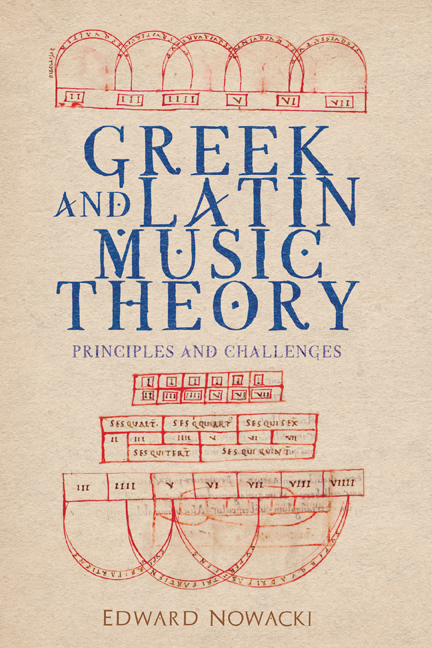9 - Guido and the Monochord
Published online by Cambridge University Press: 14 August 2020
Summary
Throughout the history of ancient and medieval music, monochords were used for both speculative and pedagogical purposes. Pedagogical intent is described in the well-known anonymous dialogue written around the year 1000 and formerly attributed to Odo of Cluny: “As the school master first shows you all the letters [of the alphabet] on a slate, so the music teacher introduces all the notes of singing on a monochord.” When used in elementary pedagogy, monochords were similar to the modern piano in singing lessons, sounding pitches and intervals and anchoring them against a stable reference. Aware of their practical utility, authors of books on music theory took pains to include instructions on how to tune the monochord. The instructions were aimed not at the instrument itself, but at the canon (Greek kanōn), the ruler placed under or beside the string of the monochord for guiding the position of the movable bridge.
Since Carolingian times the instructions with which most music teachers have been familiar are those presented in book 4, chapter 5 (and indirectly also chapters 6–12), of Boethius's De institutione musica. The passage is clearly written for readers who wish to grasp the principles of tuning in all of its complexity, but for those who want only a set of operational instructions leading to practical results, it is rather long-winded and complicated. Boethius requires the tuner to employ three kinds of division, bisection, trisection, and division into nine parts, in a series of eight steps. It comes as no surprise, then, to discover that someone like Guido d’Arezzo, with his astute pedagogical instincts, should wish to publish a method of dividing the monochord ruler that is simpler and easier to remember. The realization of that wish occurs in chapter 3 of the Micrologus (ca. 1030), in which Guido presents two methods of dividing the monochord ruler, one that is easier to memorize, and one that is faster to perform. I will consider the second method first.
It begins, as many medieval methods for tuning the monochord do, by dividing the total length of the ruler into nine equal parts. For many students of music theory who have forgotten their lessons in plane geometry, such a division may seem hard to fathom, but it is one of geometry's simplest operations.
- Type
- Chapter
- Information
- Greek and Latin Music TheoryPrinciples and Challenges, pp. 77 - 82Publisher: Boydell & BrewerPrint publication year: 2020



